At first, even before going into details related to accessible tourism and the importance of adequate service, it is necessary to put forth some concepts that will help to understand the need to think about fundamental aspects of a trip. So, I place forward the concept of people with specific needs, because here, I need to think about people with disabilities and also other general public who, for different reasons, may have specific needs, such as pregnant women, obese and elderly people.
When it comes to accessibility and inclusion, it does not refer only to people with disabilities, as many people think. This has to suit all people. So, accessibility can be more present in our lives than you may think. (Ricardo Shimosakai – Curso Básico de Acessibilidade e Inclusão)
Specific needs mean understanding that people have their individualities, and this means that the service provided to them has also its variation and adaptations. The ideal is that all this, may bring more autonomy and independence in their travels. Here I am presenting another concept that is fundamental in a trip, or, in general, in the lives of people with specific needs, which is functional accessibility. Functional accessibility is to provide beyond existing rules and laws the functionality of what is being applied to people, which in turn, is to think of accessibility from the experience of those who need it, and to open a dialogue directly with those who want to organize a travel itinerary and need specific services.
Sometimes people, without adequate knowledge, try to do and it ends up coming out wrong, and a lot because of the issue to be something very theoretical, and imaginative. What do I have to add into my courses and lectures are the practice, in fact it is what really works, even if, this is a concept that I have developed, of functional accessibility. (Ricardo Shimosakai – Curso Básico de Acessibilidade e Inclusão)
It’s impossible to talk about inclusion without talking about accessibility, so first I talked about functional accessibility and now I can put forth my objective when thinking about inclusion issues related to accessible tourism and service. Thus, inclusion is, in some existing definitions, “the move for equality between different individuals ”, that is, it means that people with specific needs should have at least a few conditions as much as possible so that they are included in society, in spaces and in what they want to do, minimum of conditions so that they can exercise their right to come and go.
When planning a trip, people usually organize themselves, going through several stages and areas, which will serve them, from their first research on a certain destination, until their return home, passing through areas such as travel agencies, websites of various airlines or buses, hotels, among others. The trip to the destination also passes through several places that needs good information so that the service provided will be of quality and pleases the client, such as transportation, accommodation, the tourist itinerary he plans to do at the chosen destination, restaurants and shops in general.
When we think of trips or tourist itineraries for people with disabilities or other people who has specific assistance needed, we first need to think of them as consumers and all that needs to be done is investment, as it will increase your chances of profit, since most of the time they end up recommending your service to others, thus expanding the shared network. So providing good service is the first step to be accessible and inclusive.
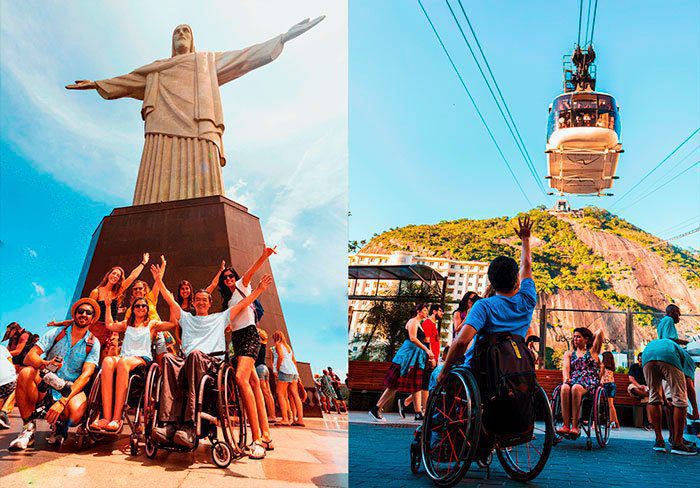
Online Travel Agencies
When you search for tourist destinations on the internet, for example, the person needs to find important information for him. Here we need to think about the website's own accessibility. An accessible website has to be conducive for screen readers that people with visual impairments can use, or even the possibility of enlarging the letter of that website or having a nice color contrast, considering people with low vision. And if you have presentation videos, it would be interesting to use subtitles so that people who are deaf can understand what is being said.
Of course, I can mention here other resources, such as video with audio description or sign language interpretation and image description, etc. Moreover, some hotel websites do not provide complete information, just mentioning that they have accessible rooms and even prices for those rooms, making the person to call the hotel directly, trying to find out if it is accessible, often they even have to ask for photos so that they can be sure if it suits their needs. Sale sites for various hotels (online travel agencies), for most part, lack information on the existence of accessible rooms in these hotels that are available for probable research and purchases.
Travel Agencies
Thinking of travel agencies (Brick and motor shops), good service becomes even more important, since they are sought precisely so that they can do the research for their customers. You have to think about the physical space of the agency, since many people prefer face-to-face service, the understanding of employees regarding the specific needs of people.
When a travel agent provides assistance to the person with a specific need, one then needs to offer the best options according to what the person needs. It is interesting that tourism agencies have employees trained to serve these customers, offering someone who speaks sign language, for example, for deaf people, or who can describe images for people with visual impairments. Searching for hotels for these people also requires knowledge about the diversity of needs, since many people with physical disabilities, wheelchair users, need rooms with space, accessible bathrooms, a bath chair, also observing the issue of mobility on the premises the place the customer will be staying.
Offering tour packages at the chosen destination, also requires all this information and knowledge, since the tourist does not want to experience problems, especially with in regards to his autonomy during the days he will stay at the chosen destination.
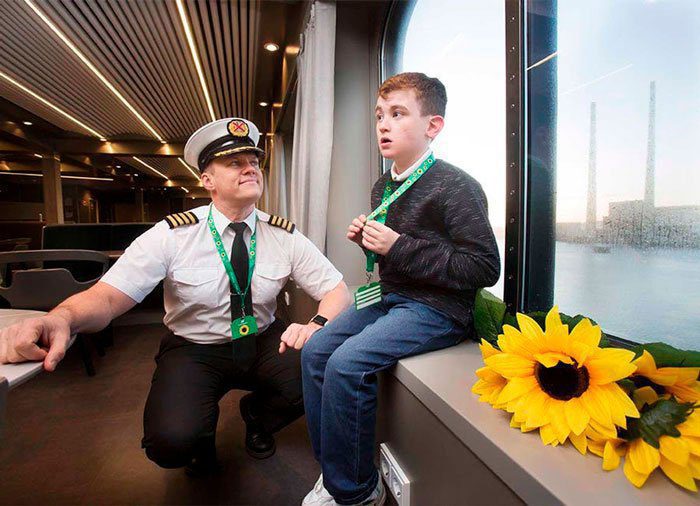
Transport
When we speak about transportation, we have some options, such as air, road, own vehicles, car rental, trains and ships. Verifying the service in all these means of transport is important. Here, one must also be prepared and trained to welcome and help people. Car rental companies are often not concerned with having adapted vehicles, thus hampering the possibilities of a client who, on a trip, will need to choose on his won the way in which he will do his tours.
I want to highlight the service on three of the most used transports by tourists: aircraft, bus and taxi (Uber).
London Heathrow Airport, created the Sunflower lanyard, to identify people with invisible disabilities, and thus be able to identify these passengers who need a modified service.
Most airlines receive training to receive passengers with specific needs; including when purchasing an airline ticket, you can already request this service, thus identifying whether you are a passenger using a wheelchair or a guide dog, or identifying other’s needs, thus informing about your disabilities or even to the extent of being pregnant.
However, even with this training that the airline personnel receives, which allows its employees to serve passengers with special needs well, but what is seen is that there are still some complaints from people who use this mode of transportation. An example of this is the deaf person who, in some cases, did not understand important things like what will be served during the flight and what options he can choose from.
Over the road transportation, one of the main issues is related to adapted buses. There are still many who are not prepared and those among employees are not well trained, starting with the use of the equipment of the bus itself. Since, in some cases, due to lack of maintenance, the equipment does not work, and sometimes people with physical disabilities need to be carried to their seats.

Regarding taxi or uber, a common problem is that the driver refuses to accept a passenger with special needs. In some places, cases have been reported of drivers not accepting the guide dog of the visually impaired person; however, this goes beyond acceptance, as it is already a law, and it is mandatory to accept the guide dog anywhere or at space. Sometimes taxi or uber drivers also refuse to accept people who use wheelchairs, as they talk about space or even the person's final destination, which may not have a place to stop properly.
There is still a lot to be done for good service in all these means of transport, because the people who provide service must understand the various existing needs, as well as, need to prepare themselves to receive their customers and tourists in general.
Accommodation
When arriving at the chosen hotel, the tourist will always want a good service. Today, for attending to people who are deaf, there is already a possibility, in some places, to connect to a central place that can provide sign language interpretation; however, what I observe in my research is that the person who is deaf prefers face-to-face attendance, because it is certainly more dynamic and pleasant to the guest.
Hotel employees who will escort a person with a disability to their room need to know the ways of accompanying the guest. That is, it is necessary not to impose a way on the person, the best choice is to discuss with them and know what their needs are. A person with a physical disability who uses a wheelchair may have his own preference, for e.g. being able to push his chair himself or asking the employee to push it. A person with visual impairment, on the other hand, must be guided in the correct way, who is always beside the person who guides him, and he takes his shoulder or elbow. It is not the right way for those who are guiding to go ahead. Another possibility is when the person guiding gives a description of the place for a visually impaired person.
Good service is also in looking into the small details. An example of this is when cleaning the room of a visually impaired host. Little thought is given to this, however, as people with visual impairments move around according to the location of their movements and where they have put their things. Thus, when cleaning the room, it is ideal to keep everything in the same place, so that they do not lose their orientation.

Tour Guides
The tour guide has a fundamental role in the trip maneuvering into the best possible way, therefore, he has to be prepared to receive tourists with special conditions. He needs to know the places where they go with the tourist, and know if these places have accessibility and are prepared to receive the people, as, for example, if they have bathrooms that can be used. In addition, the tour guide himself needs to understand the needs. When you talk about a historic monument to a group of people, you usually use a narrative simply modified to the specific monument.
But the people with visual impairments cannot visualize, to describe this monument for those to understand its details, such as size, format, colors and other details becomes extremely important, that makes the person visualize how it is. If a group of tourists have a person who is deaf and a guide does not know sign language, a person will be excluded from understanding the history of the historic place or monument, so a team needs to prepare itself for this, that is, train their guides . Or perhaps, it would be interesting, to train sign language interpreters to be tour guides.
Local tourist guides, generally knows the attractions and their history. If you are well trained for accessible tourism, you can provide specific special attention, such as organizing bathroom stops, with the best access options, and use only when necessary.

Restaurants
Food is part of the basics of a trip; therefore, they should pay attention to the care of people with special needs. Offering a braille card with enlarged letters is a distinct difference that draws a lot of attention, as well as, for example, thinking about your physical space to receive people with physical disabilities.
In a Self-Service restaurant, the construction for self service, must allow people who use wheelchairs to approach the place, both to see the food and to serve with autonomy. Here we also mention that the place must have good lighting, since people with low vision can still use low visual ability that they have, and prefer to have autonomy when serving. Good lighting can help. In addition to meeting the ideal form, in an understandable and hospitable way, it allows for the popularization of language signs.
With the help of booklets and waiters, even those who do not know sign language, are encouraged to order the chosen dish in this way.

Tourist attractions
Here I want to highlight some of the main tourist attractions, among them: museums, theaters and adventure activities. In museums, theaters or other attractions that have a ticket booth so that the people can buy their ticket, an important point is the designated queue, which must be well placed, taking into account the issue of mobility and also should be well signalized. The employee must know how to serve a person with a specific need, respecting their limits. Here I mention the care for elderly people, who mostly need more time, and that their care is given with patience.
Other points should be noted, if there is a counter, it must be at an adequate height to better serve everyone, thinking of people who use a wheelchair or people of short stature. The assistance to the person who is deaf also needs to be of quality, thus observing the proper communication with them. Another point that I observe in my research is the use of tactile flooring. It needs to be well placed to better guide the mobility of people with visual impairments. I have already seen cases of tactile flooring that did not lead to anywhere or that ended up in obstacles, such as walls, columns and others. One of the useful tips; I suggest the use of tactile maps, which help the person to understand the place and be able to walk in it with more autonomy.
In museums, in addition to the appropriate physical space, it is interesting to bring resources so that people with visual impairments or people who are deaf can also understand the exhibits on display. In some places there is already the possibility for visually impaired people to touch objects and exhibits in general, however, resources such as providing audio description and sign language interpreter, can already increase the audience that goes to this tourist attraction.
In theater, both audio description and sign language interpretation will also make the show much more accessible and inclusive. A good service, for sure will bring in more people to attend and patronize theaters. In many places in the world, there are already such possibilities, however, this needs to be expanded more and more.
Another failure of places like museums and theaters is the lack of publishing the information on accessibility. Many times the spaces have these resources, but they do not communicate that they do, thus making it impossible for more people to go to these spaces.
In regards to adventure tourism, what I try to address is the fact that the good service always is having full respect for the limits of the abilities of the tourist who intends to take tours like this. Generally, when we talk about adventure tourism, we think of trails, waterfalls, mountains and other activities done in nature. It is very difficult to change the natural structure and put ramps and elevators, so the tourist with special needs who seeks this type of tourist attraction, should already know that he will find challenges, and still want these challenges, and these are different experiences that they seek. What can be done is to bring the appropriate security for such activities, such as a trail chair. Most importantly, tour guides are prepared to respect and also provide the necessary support to these people.

Conclusion
In this text I have put few points out of many that need attention in order to provide a quality service. Finally, I want to highlight an important point. If a person with a disability or other special needs is being accompanied by another, never stop asking him directly what his wants or needs are, he can answer you in more detail, after all, he has autonomy and independence to make his choices.
In short, for providing good service in accessible tourism, it is necessary to have inclusion, because without inclusion there is no adequate and quality hospitality. That is, a person who goes on a sightseeing tour and cannot participate in it, is excluded. Accessibility and inclusion need to go together; there is no point in being accessible without being inclusive. About this I can cite examples, because an accessible bus is good, but if the tourist guides who are there know how to meet the tourist with special needs, the guide needs to be inclusive.
Source: Design for All



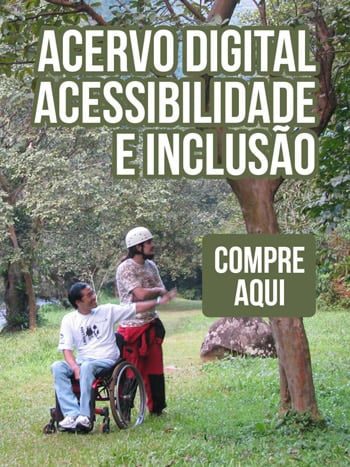



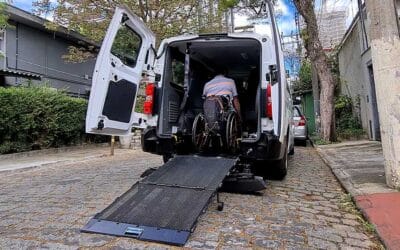


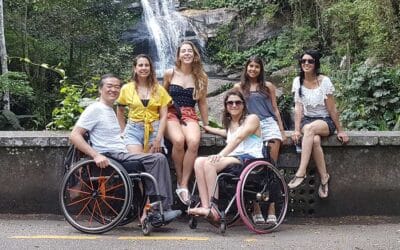
0 comentários